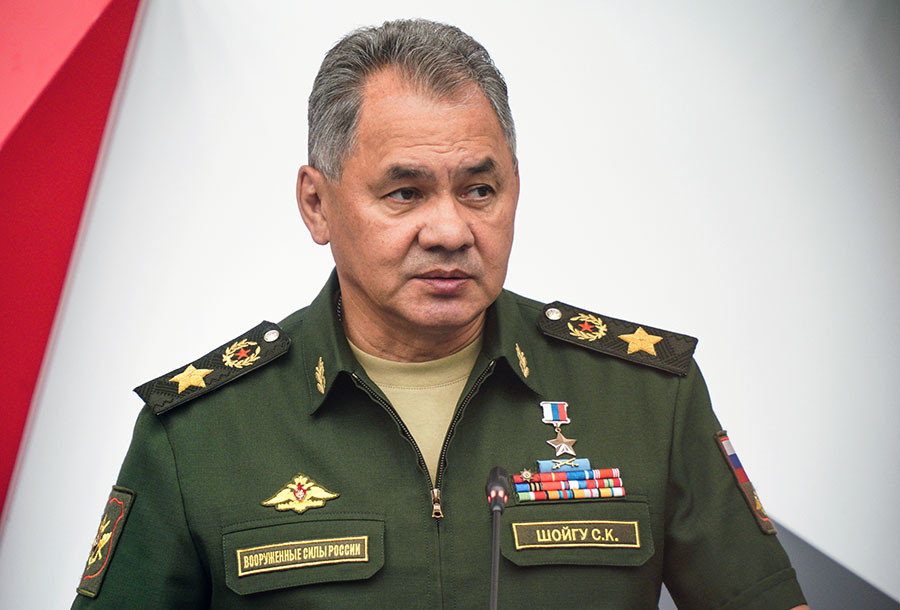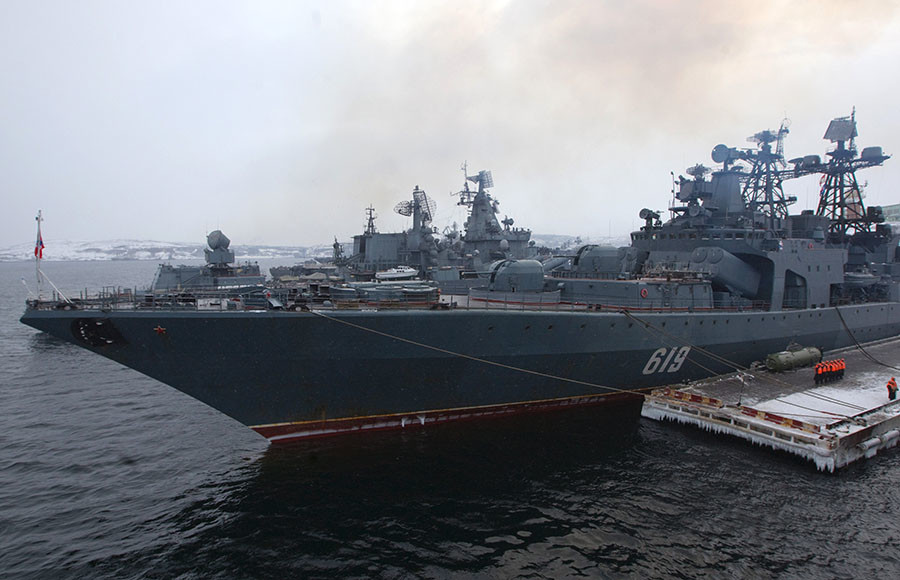US Navy aircraft carrier went to the Arctic for the first time in 27 years. This was reported in the press service of the US military. The last time an American ship of this class participated in the Arctic exercises in 1991, then it was USS America. This time, the USS Harry S. Truman is moving in the direction of the North Pole.
“Almost 30 years have passed since deck aviation operated in such conditions, and, despite the bad weather, our crew members show that this ship is able to fully use its capabilities anywhere in the world,” says ship captain Nick Dienna.
However, experts are skeptical about such assessments.
“The fact is that all American aircraft carriers are equipped with steam catapults, which practically cannot work in the northern conditions - they have a latitudinal restriction. Apparently, the Pentagon decided to see how bad the planes with USS Harry S. Truman would take off in cold ocean waters, it will be interesting for us to see, ”said Vladimir Prokhvatilov, an expert at the Academy of Military Sciences, in an interview with RT.
The only exception may be the newest aircraft carrier Gerald R. Ford, equipped with an electromagnetic catapult, but this technology has not yet been fully worked out, the expert stressed.
Strategic competition
Starting October 25, USS Harry S. Truman will join the NATO Trident Juncture (United Trident) teachings, which will last until November 7. In recent years, these are the most large-scale maneuvers of the alliance, which are held near the Russian borders: about 50 thousand soldiers from 30 countries - members of NATO will take part in them. According to the scenario, the alliance will protect Norway from the aggression of the “big country”.
London will send to the region 2.7 thousand British soldiers, six military vessels, as well as 480 ground vehicles. As explained earlier by the Deputy Minister of Defense of the United Kingdom, Mark Lancaster, for London it is “more important than ever” to prepare the army for action in polar conditions, since “The Arctic and the Far North are increasingly militarized.”
The British authorities do not hide their plans to build up a military presence in the Arctic. This was at the end of September told the British Defense Secretary Gavin Williamson. We are talking about the deployment in Norway of 800 marines and special forces soldiers of the United Kingdom in a joint mission with the military of the United States and the Netherlands.
The new defense strategy of London implies the presence of the British contingent in the arctic regions of Norway for at least ten years. As the head of the British Ministry of Defense explained to journalists, the government is now working on an arctic defense strategy. One of the steps, in particular, will be the creation of a British military base in northern Norway and the deployment of 800 British troops in the area in 2019.

- Secretary of Defense Gavin Williamson
- Reuters
- © Toby Melville
As the British minister stressed, such measures were pushed by London, which was launched by Russia in the Arctic, which is restoring the bases of the USSR times in the north.
According to experts, there are a lot of reasons for competition: the Arctic subsoil hides huge hydrocarbon reserves, production of which will be simplified as technology improves, as well as as a result of global warming. According to UN statistics, only proven oil reserves in the region amount to about 100 billion tons, and natural gas - 50 trillion cubic meters. m
However, when it comes to competition for the Arctic, the issue is not only in mineral deposits.
Global warming over time will lead to the fact that the Northern Sea Route will become the main trade route from Asia to Europe, as it is the shortest and runs along the borders of Russia, Ivan Konovalov, director of the Center for Strategic Conjuncture, said in an interview with RT.
“We are already carrying cargo along this route with the help of icebreakers, and over time it will be possible to move along it even without icebreaking support. It is clear that the United States, Canada and many other countries do not like this situation: NATO cannot accept the fact that such an important infrastructure resource will belong to Russia, they, figuratively speaking, “reduce teeth” from envy, ”the expert explained.
US Arctic Strategy
Statements by Western politicians and the military that the responsibility for the militarization of the Arctic lies with Russia is a clear guile, experts say.
Back in 2009, the administration of Barack Obama adopted the Arctic "road map" of the US Navy, including the expansion of marine operations in the region. In 2013, the Pentagon published a special Arctic strategy.
The plans of the Pentagon include participation in various exercises, improving the experience of combat operations in polar conditions. The US command predicts that these skills may be needed by the US military by 2030 to protect the American Arctic possessions. Also, the Arctic doctrine instructs the Pentagon to respond with demonstrative maneuvers to attempts by any countries to limit the passage of American commercial and military ships through the Arctic waters.
At present, this threat can be addressed to Moscow, since it is Russia’s right to control the Northern Sea Route that Washington is challenging.
An important role in the region is played by the US-Canadian aerospace defense system NORAD. It protects North America from a possible missile strike from the North Pole. Also, at least 100 military aviation units are deployed at two Alaska bases, and there are about 200 HC-130H rescue military transport aircraft at the disposal of the US Coast Guard.
Another American air base, Thule, is located on the territory of Greenland, here the Pentagon deployed interceptor missiles and radar installations. In September, it became known about Washington’s plans to further invest in the development of the infrastructure of the airbase, founded in 1949, immediately after Denmark’s accession to NATO.
The ground command of the US Armed Forces in Alaska is represented by mechanized infantry and airborne brigades. But a serious problem for the United States is the shortage of icebreaking-class surface vessels. Today, the US Coast Guard has only one heavy icebreaker, the Polar Star, built 40 years ago.
In the US, they are well aware of their lag in this area, but even against the backdrop of colossal defense spending, Washington has so far been unable to agree on the allocation of funds for the construction of new icebreakers. Therefore, while the Pentagon can be content only with nuclear submarines capable of operating in the Arctic Ocean. Which, however, does not prevent the American side from claiming dominance in the area and participating in large-scale Arctic exercises.
Norway activities
Another country with noticeable military activity in the Arctic is Norway. In the 2007 declaration, the Norwegian government formulated the main directions of the Arctic policy.
The protection of Norway’s interests in this area is called upon to be carried out by six modern Ula-class diesel submarines capable of operating in polar conditions. True, the Norwegian submarine fleet has certain difficulties with basing. In 2009, the Kingdom’s Parliament, for reasons of economy, abandoned its most northern submarine base in Olavsvern, despite the resistance of the military.
The base was sold to businessman Gunnar Wilhelmsen for only € 4.4 million. And in 2015, a series of panicky publications appeared in the Western media: it turned out that the entrepreneur had concluded a contract, according to which the Russian research vessels began to use the base.
To gallery page
According to experts, despite all the assurances of Norwegian politicians, Oslo’s intentions cannot be called exclusively peaceful. On the contrary, Norway has put a lot of effort into militarization of the Arctic region. As of 2012, the total tonnage of the Russian Northern Fleet in relation to the 1988 figures was only 42%, while in Norway it was 149%.
The basis of the arctic land forces of the kingdom is the North North mechanized brigade capable of conducting combat operations in polar conditions and properly equipped.
The brigade is armed with Leopard-2 A4NO tanks, CV9030N and M-113 infantry fighting vehicles, SISU / PASI armored personnel carriers, IVECO and Dingo 2 armored vehicles, M 109 A3GNM artillery guns, 81-mm mortars.

- Norwegian military personnel during the 2013 exercise
- Gettyimages.ru
- © Robert Nickelsberg
It should be noted that Oslo is in favor of strengthening cooperation through the regional organization NORDEFCO (North European Cooperation in the Field of Defense), thus contributing to the militarization of the polar region
Oslo does not hide the fact that Norway’s military activity in the Arctic has become the “norm”. About this, in particular, said earlier the commander of the armed forces of the Kingdom of Haakon Bruun-Hanssen, presenting a report on the activities of the military department over the past year.
“A higher level of military presence in high latitudes is now a new norm. 48% of the activities of the Norwegian Navy in 2017 were in the Arctic, ”Bruun-Hanssen said.
As Norwegian Defense Minister Frank Bakke-Jensen stated in July of this year, Oslo is building up military forces in the north only because of its “threatening neighbor” - Russia.
Canadian teachings
Canada is no less enthusiastic about the military development of the Far North.
"Canada made the first warning shot in the new cold war for the resources of the North ... its government announced that it was going to build two new military bases in the Arctic desert," the British newspaper The Times wrote in August 2007.
These preparations by Ottawa were interpreted by experts as a reaction to Russia's plans to expand the Russian Arctic shelf.
First of all, we are talking about the Mendeleev and Lomonosov ranges, which run along the Arctic seabed. Russian experts insist that these formations are a continuation of the Siberian continental platform and, according to the provisions of international law, are included in the exclusive economic zone of the Russian Federation.
To collect actual evidence of this, since 2005 several scientific expeditions have been carried out, scientists have collected samples of sediments and conducted seismic studies. Subsequently, on the basis of the data received, Moscow filed a relevant application to the UN. However, in Ottawa, these actions of the Russian side were perceived very negatively: rich hydrocarbon deposits stored in the depths of the Arctic shelf were put at stake.
Beginning in 2008, Canada began to conduct regular Arctic exercises, as well as take part in maneuvers with the armies of the allied states.
The 2015 Liberal Party of Canada, which won the elections, announced plans to further increase military activity in the Arctic region. Already in 2016, Ottawa began developing logistics infrastructure, expanding, in particular, the Arctic Training Center in Resolute Bay. Also, the Canadian side has begun to create transport hubs for carrying out polar operations (North Operation Hubs, NOH). It is assumed that the infrastructure being created will make it possible to quickly deploy military units in the Arctic and ensure their supply within a month.
Russian answer
In the face of growing competition for Arctic resources, Russia is also forced to increase its capacity in this region. In April 2014, Russian President Vladimir Putin instructed the Ministry of Defense to create in the Arctic a unified base system for surface ships and submarines of a new generation, to strengthen the border, and also to form a special structure that would be responsible for realizing Russian interests in the region. By the end of 2014, the Joint Strategic Command (USC) "North" was created in the structure of the Armed Forces of the Russian Federation, including aviation, air defense and ground forces.

- Defense Minister Sergei Shoigu
- RIA News
- © Vladimir Astapkovich
Russia holds regular polar exercises in which various branches of the military take part. For example, in April, the first maneuvers of the Rosguard were held here, special attention was paid to the protection of Rosatomflot facilities. In August, firing exercises in the Russian Far North were conducted by the Bastion coastal missile system (DBK), which was previously used by the tactical group of the Northern Fleet.
Russia today has the most powerful northern grouping: the Northern Fleet has 38 surface ships and over 40 submarines, including eight submarines carrying ballistic missiles.
On October 9, the Arctic grouping of the Northern Fleet, led by the large anti-submarine ship Vice Admiral Kulakov, together with the border service, conducted exercises in the waters of the Barents Sea. The sailors worked out actions to protect the region’s water resources, and deck aircraft, the Ka-27 helicopters, also took part in the maneuvers.
These exercises completed the large Arctic campaign of the Northern Fleet, during which the vessels overcame more than 9 thousand nautical miles. In total, the group conducted ten tactical maneuvers during the march, including amphibious operations in the areas of Yakutia, Chukotka, in the Bering and other seas.

- Large anti-submarine ship "Severomorsk" at the pier in the port of Severomorsk
- RIA News
- © Mikhail Fomichev
Strengthening the Russian military potential in the northern direction was a response to the attempts of the United States to expand its presence in these areas after the collapse of the USSR, experts say.
“After the end of the Cold War, the Americans began to increase their military activity in the Arctic, their atomic submarines went under the ice to the North Pole, and floated there. We were never the first to fight, it’s common knowledge, ”Vladimir Prokhvatilov said in an interview with RT.
But now there is no doubt that the West is ready to show aggression everywhere, including the Arctic region, the expert said.
“So that no one would encroach on our northern possessions, Russia began to create a system of fortified points and other infrastructure in the area. This is necessary to ensure national security, ”Prokhvakilov added.
Ivan Konovalov holds a similar point of view. He recalled that for the Soviet Union the Arctic has always been a strategic direction, but after the collapse of the USSR, Russia for a long time left the area.
“Fortunately, then we began to regain lost positions. This is very annoying to the West, which was convinced that Russia could no longer catch up. And the fact that the competition has taken a military connotation is solely NATO. In the 1990s, the Americans did everything they wanted in the Arctic, there were constantly running submarines of the US Navy. The United States became the leader in the militarization of the North. Norway, Canada and other countries act in the key set by Washington, ”the expert concluded.
